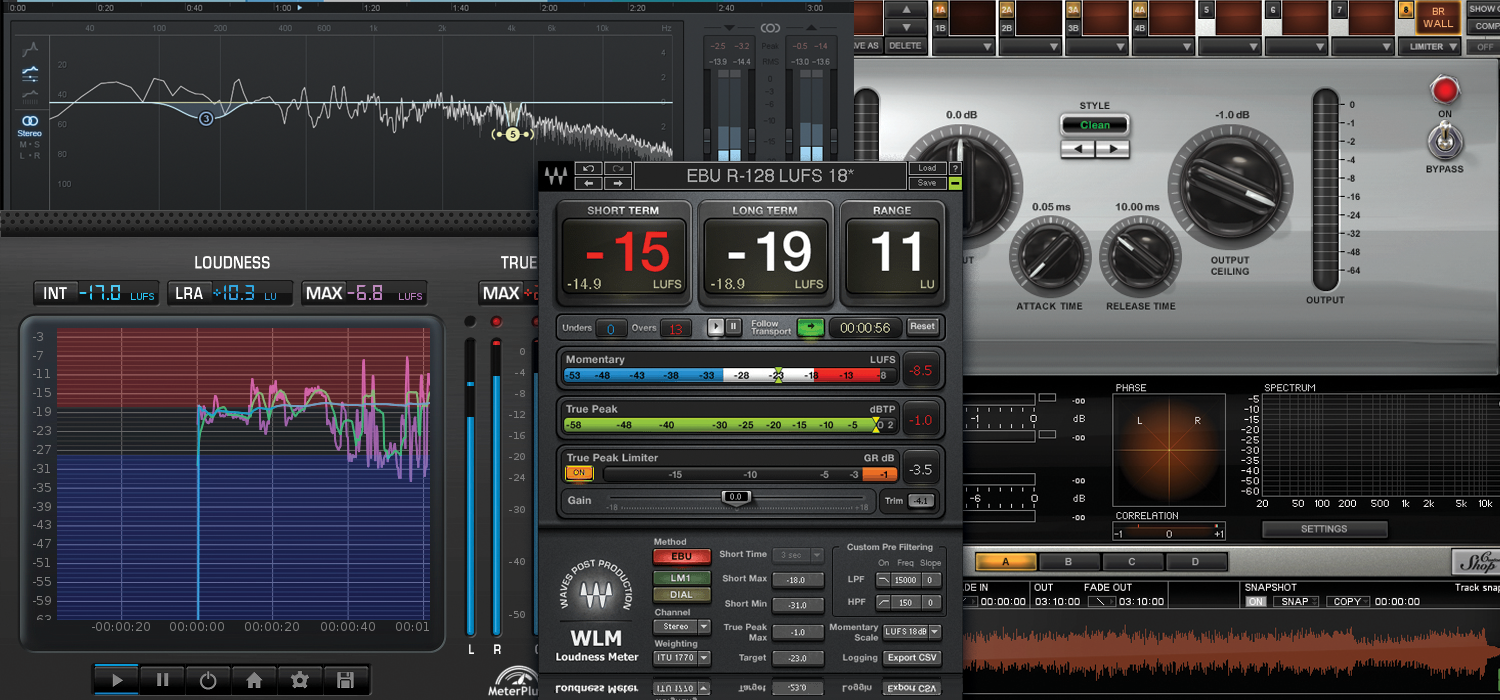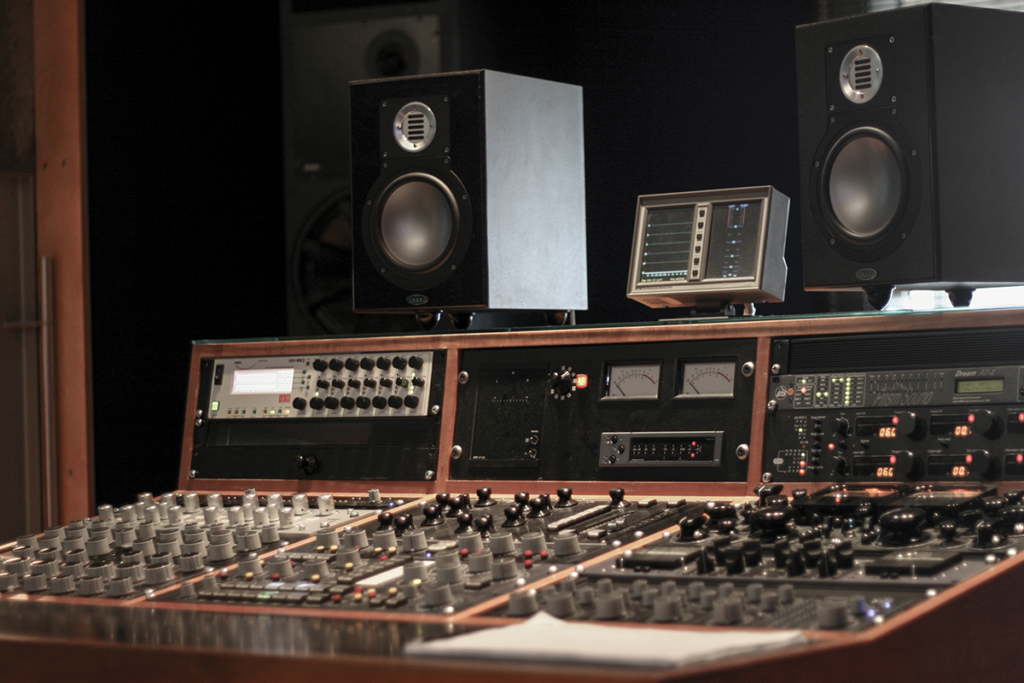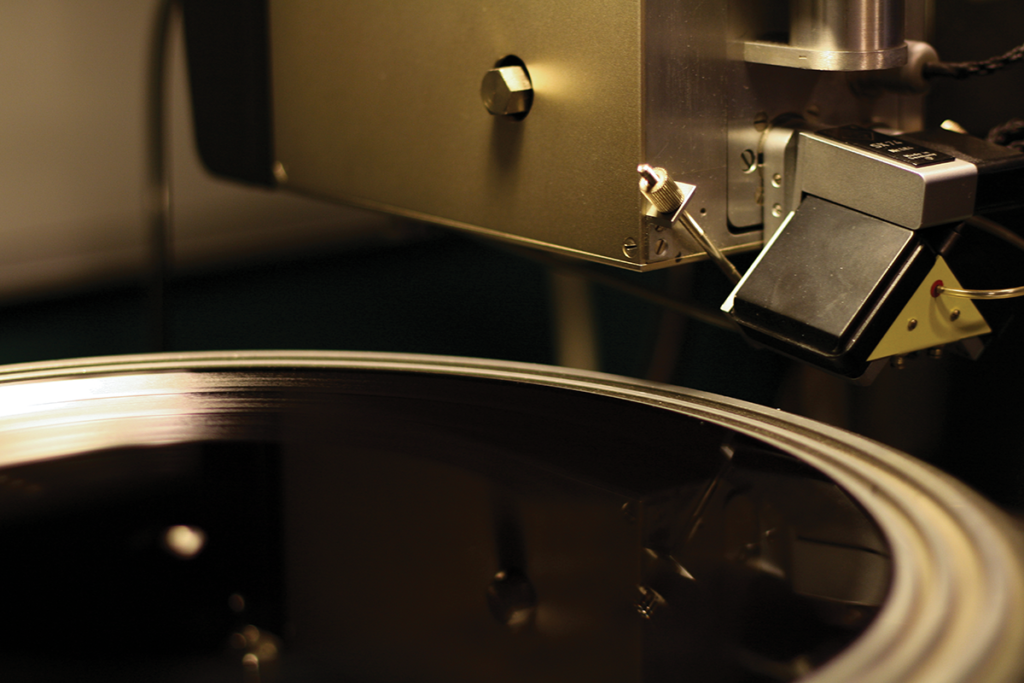In The Box Mastering – The Ultimate Guide
Maximising the impact of your finished mix has changed radically over recent years with the introduction of so many new delivery formats. Here, Mike Hillier covers the in-the-box tools and tricks you need to know. It’s our in-the-box Mastering Guide… The days of mastering being used to squash the life out of mixes are over […]

Maximising the impact of your finished mix has changed radically over recent years with the introduction of so many new delivery formats. Here, Mike Hillier covers the in-the-box tools and tricks you need to know. It’s our in-the-box Mastering Guide…

The days of mastering being used to squash the life out of mixes are over – the loudness war has been won, and dynamics are finally coming back
The process began with the introduction of EBU R128 in 2010, a set of recommendations regarding loudness set down by the European Broadcasting Union. This set of guidelines defined a new way of measuring loudness – the Loudness Unit (LU) – and recommended that broadcast audio be normalised at -23LU referenced to full-scale digital audio (LUFS).
This guideline quickly found its way into law in Italy; and broadcasters in many other European countries, including the UK, set personal goals of complying with the standard. A similar law, the CALM Act, was passed in the US, which demanded broadcasters there comply with ATSC A/85, which is based on R128.
These systems, though, only apply to broadcasters – and while mastering engineers began to take note, it wasn’t until streaming services such as Apple Music, Spotify and YouTube all began implementing similar ‘loudness normalisation’ that the war was finally won.
The loudness normalisation techniques used by each of these services differ slightly, but the principle is similar in each: the loudness of each track is measured before playback, and each file is automatically turned down so that they play back with the same loudness. Heavily limited tracks are turned down the most, while dynamic tracks are mostly left alone – meaning they now punch louder than the limited tracks.
Of course, this doesn’t mean that mastering is no longer necessary. Mastering has always been about far more than simply making everything louder. And artists haven’t stopped wanting to hear their music as loud and in-your-face as possible. It’s simply that the techniques to achieve loud and aggressive mixes have changed, and the methods we used to use now have the opposite effect, making mixes quieter and less noticeable.
With this in mind, it wouldn’t be much of a surprise to see many albums from the loudness wars getting the remaster treatment, but this time with their dynamics left alone, or even enhanced.
In this feature, then, we’re going to look at what you can do in your DAW to make your masters sound loud and punchy, without sacrificing the dynamics. We’re also going to look closely at the measurements you should be making to ensure you are listening to your tracks as they will play back on each of these streaming services. So strap in and enjoy our ultimate mastering guide…
The Mastering Guide Part 1 – The New Loudness Paradigm
Previously, mastering engineers have used all manner of tools to measure loudness: from PPM and VU meters to RMS measurements, dynamic-range meters, and now the new Loudness Unit. So which should you use in your own mastering sessions?
Before we go on, it’s important to understand the difference between each of these types of meter. Peak meters, such as PPMs, measure the loudest points on the waveform, and are useful for informing you of how much headroom you have before the signal will clip, but do not offer any indication of the subjective loudness of the material.
A heavily compressed signal may sound loud while not containing any loud peaks, while a less-compressed signal may sound comparatively quiet, while containing some very high peaks. Peak meters can also be calibrated to over-sample the incoming signal in order to determine if the signal contains any inter-sample peaks which may cause problems further along the chain, either when converted to an analogue signal, or when converted to mp3. This type of peak meter is sometimes referred to as a True-Peak meter.

Powerful emulations of traditional studio mastering trickery are available for the home producer in the form of dedicated metering, EQ, limiting and compression plug-ins
RMS, VU and Loudness Unit meters provide a more useful measure of perceived loudness as they average out the signal over time. This means they are less useful for knowing where clipping may be occurring in your signal, but will let you know how loud one signal will be perceived compared to another.
However, even these are not ideal measurements, as our ears perceive volume differently at different frequencies, and have no means of showing how much of the signal lies within the range of human hearing.
Two signals with similar RMS and peak levels may still not sound comparatively similar in level, if one of the signals contains a good portion of its energy outside of the range of human hearing while the other is more heavily band-limited. Even within the limits of human hearing, a 200Hz tone will sound quieter than a 2kHz tone at the same level, following the equal-loudness contour, or Fletcher-Munson curves.
To counter this, there are various frequency curves which can be applied to weight the signal before measuring. A-weighted curves have been commonly used for measuring loudness and are built into many meters. You will also occasionally see C-weighted measurements, and a new weighting curve, the K-weighting, which is most commonly used alongside Loudness Units to measure loudness in Loudness K-Weighted Full Scale (LKFS).
With all of this in mind, it’s clear that there isn’t one single measurement you should be using, but a combination of several different meters: one which can show you the true-peak values of your signal, and another which can show you the perceived loudness. The difference between these two figures is also important, as it is this which gives us an indication of how much dynamic range has been left in the recording.
It is also important to consider the difference between short-term loudness, and long term, or ‘integrated’ loudness. A song might, for instance, have quiet verses and loud choruses. This will mean we should get a different loudness measurement for each.
In fact, even if we look at a single bar of music, it’s likely that some beats will have more energy than others. A short-term measurement over 500ms is likely to produce a different result to one over five seconds. However, it is the integrated loudness that’s important to us, as this is what will be measured by streaming platforms to determine the playback gain, or how much the track is to be turned down by.
The Mastering Guide Part 2 – What Is the New Loud?
Up until now, in the digital era we have only needed to pay close attention to the peak meters to make sure the track wasn’t clipping, while VU, RMS and other loudness meters have been used merely as a guide.
And while many mastering engineers would argue vociferously about increasing the dynamic range in the final master, the client – be that record label or artist – would nearly always be pushing for louder masters, hoping, perhaps naïvely, that louder masters would make their music stand out.

Mastering for vinyl presents it’s own challenges, see our interview with vinyl mastering engineer Pete Hewitt-Dutton for more info
Now that audio-playback software, such as iTunes, and streaming services, such as Spotify and YouTube automatically normalise the loudness of music, adjusting the volume of louder tracks down to make everything the same, we need to start paying closer attention to the loudness and less to the peak level.
More to the point, in order to get our tracks sounding as loud as possible on these platforms, we need to start targeting our loudness to these platforms while maximising the peak-to-loudness ratio (PLR).
While it would make our lives simpler were each of the major platforms (Apple Music, Spotify and YouTube) to use the Loudness Unit to measure the program loudness, and all to converge on a single normalisation value, the reality is that each of the platforms has its own proprietary loudness measurement and each has a slightly different figure for normalising to.
Apple Music, for example, uses SoundCheck to determine the program loudness, normalising each track to approximately –16 LUFS, while YouTube is normalising to around -13 LUFS and Spotify is currently normalising to -11 LUFS, which, while 5LU louder than Apple, is still dynamic compared to many ‘loudness war’ casualties.
In effect, this means that on Apple Music, any track mastered louder than -16 LUFS will be turned down automatically to playback at -16LUFS, while on Spotify, any track mastered louder than -11 LUFS will be turned down.
On Apple Music and YouTube, more dynamic tracks with a peak-to-loudness ratio greater than the platform target loudness allows will not be adjusted. So they will sound quieter, maintaining the integrity of the dynamics in the recording.
However, Spotify will apply peak limiting to tracks with a peak-to-loudness ratio greater than 11, which in effect turns everything up, but at the expense of dynamics.
The Mastering Guide Part 3 – How to Make Your Music Stand Out
Since Spotify is using limiting, and has the highest platform loudness, it makes sense right now to use Spotify as our ‘target loudness’, in order to avoid having our masters further limited by Spotify – unless you intend to master separately for each platform.
Masters will continue to be turned down on other platforms, but the dynamics will be left alone, and our masters will still sound more dynamic on these platforms and have more energy than loudness war tracks, which will have been turned down a far greater amount.

Spotify’s peak limiting affects tracks with a peak-to-loudness ratio greater than 11
If you don’t have a loudness meter with measurements in Loudness Units, a simple RMS meter will provide an adequate approximation of short-term loudness; but measuring integrated loudness is more difficult without a dedicated meter.
If the track has roughly equal amounts of loud and quiet sections, you could try and balance the two out, so that the average remains around -11dB RMS, with verses measuring around -13dB RMS and choruses up to around -9dB RMS. But if you are thinking of becoming or already are a professional mastering engineer, you’ll want to invest in one of the available meters.
When working on an album, don’t think you have to make every song the same loudness. Many platforms are intelligent enough to know when the listener is listening to a full album, and will measure an integrated loudness for the whole album, and play back at that level when the album is played as a whole – only using the track integrated loudness when playing back playlists, or random play.
This enables us as mastering engineers to continue to craft a journey through the album, with loud tracks having more impact after a quieter ballad.

Apple Music uses SoundCheck to verify program loudness
If we can’t use limiters to make masters sound louder, what tools and tricks should we be using to give our masters impact? The simplest trick is to make use of the extra headroom available.
If your average loudness is -11 LUFS (the Spotify loudness target), you have 11 LU of headroom for your peaks. If you can use this full range your mix will instantly carry more dynamic punch than mixes with quieter peaks. In many cases, this will mean finding new ways to add to rather than reduce the dynamic range of masters. Expanders are one option; however, they often don’t produce great results on full-programme material, being better suited to specific tasks.
EQ is the best weapon in the mastering engineer’s arsenal for giving the mix impact, particularly since the weighted curves of the loudness meters will enable us to boost some frequencies without much change in the measured loudness; while cutting others will help us reduce the measured loudness while keeping the peaks where they are, in effect increasing our dynamic impact.
Since the weighting filters almost all work by focusing the measurement onto the most receptive part of human hearing – between roughly 1 to 5kHz – we can focus our attention closely on this range. Any cuts made to this range will provide us with a more heavily reduced loudness compared to cuts in other ranges, while boosts outside of this frequency range will not increase the measured loudness by as much.
There is little point pulling everything out in the 1 to 5kHz region of course, as your master will sound terrible – the goal should still be to produce well-balanced masters – but if there is room to pull some out, you can now do so knowing that your mix will play back louder as a consequence.

Also, now that we have headroom available to us, we can safely add a little extra sub into our masters without lifting the loudness too much.
Of course, we’re not suggesting that you can’t use limiters at all. They are still very useful tools for protecting your final master from clipping, particularly True-Peak limiters. And they still have a useful purpose for deliberately squashing material for creative musical purposes, irrespective of the loudness normalisation.
The Mastering Guide Part 4 – The Hippocratic Oath
Mastering compression, like limiting, will reduce the dynamic range of the mix. And despite using lower ratios it can often have a more dramatic effect on the audio, even with only one or two dB of gain reduction.
While it does reduce dynamic range (thus increasing the measured loudness), subtle use of compression can still be a very important tool in mastering, precisely because it can have a large effect on our perception of the mix even at subtle settings. Compression can glue a mix together like no other tool at our disposal. It can also pull all of the life out of a mix – so be careful.
Not every mix needs mastering compression, but if a mix isn’t sitting together, and EQ alone isn’t helping you to place it all in one space, then adding a slow-attack, slow-release compression stage with a low ratio can help to sit everything together.
Saturation tools can also help to sit a mix together, especially one that has been done entirely in the box. However, this too should be applied sparingly, and often not at all. If a mix is sounding overly digital, spiky, and harsh, a little soft-clipping through a tape simulator can be the ideal tool, but many mix engineers are now employing analogue emulation tools, such as tape simulators and mix-buss emulations at nearly every stage, adding noise and saturation throughout the mix.
In this case, a final stage added at mastering is only going to raise the noise floor and add mud to the mix. As with everything else in mastering, these tools should only be used where appropriate.
In an ideal situation, a great mix will need no mastering processing added at all, and the mastering engineer will simply listen, and then pass on the mix untouched. Even among experienced professionals this is likely to be rare, but should give you an insight into how to approach a master. Listen closely, preferably several times, before reaching for a single processing tool.
Describe for yourself what needs to be altered in the mix to make it sound better, and then – only when you are sure you can make it better – should you apply the process. Most times, we find ourselves needing a little gain adjustment first, followed by some EQ – usually to pull out a resonant frequency in the mix.
With this done, listen again, and compare the master closely with other tracks in the genre, before deciding if any gentle shaping needs to be done with further EQ processing, or if more drastic attention is needed with compression, M/S tools, multi-band processing or saturation.
There are, of course, still some listeners who listen to physical formats, as well as a couple of streaming services which don’t yet use any loudness normalisation. So some artists will still want their music to sound as loud as possible on CD. Sometimes this can’t be avoided, but it’s worth considering that a more dynamic mix will sound better (if not as loud) on these formats. Plus, many listeners who still use CD are doing so on high-quality systems, and will have plenty of volume available on the amp should they wish to simply turn the CD up.
There’s more to this mastering guide, firstly we have an addendum of useful information that you can read by clicking here or the below link, also we have tutorials covering mastering with T-RackS, iZotope’s Ozone 7 and additional plugins – we’ve also got 6 of the best loudness meters as well as an interview with Pete Hewitt-Dutton, a mastering engineer that works with vinyl.